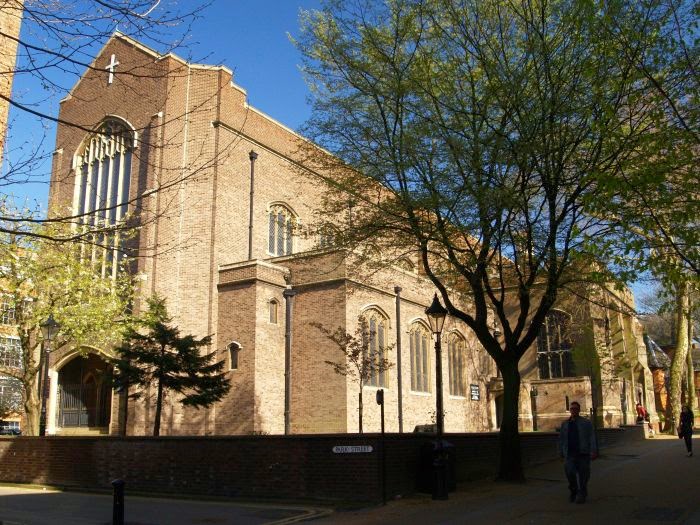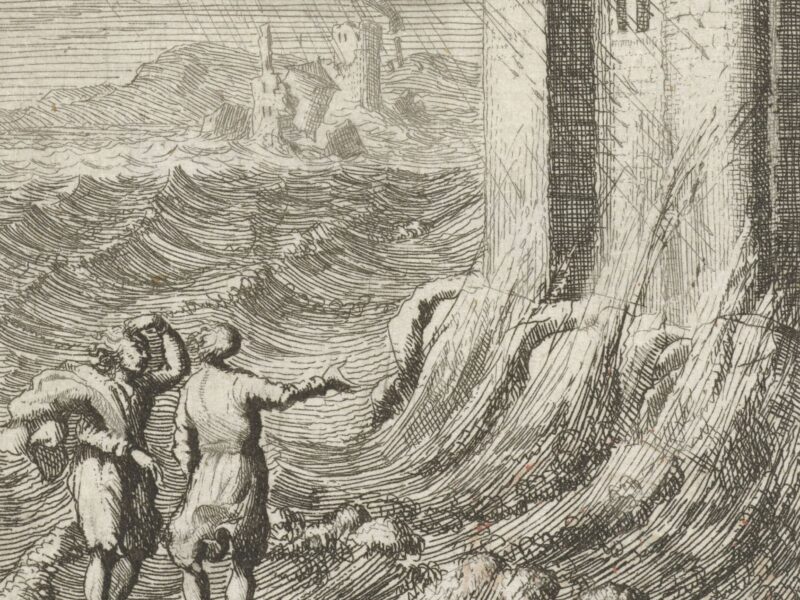
Dominican Priories: Leicester
2.25k
 When looking upon our modern Priory of Holy Cross, Leicester, it is so easy to forget the rich and varied history that explains its existence today.
When looking upon our modern Priory of Holy Cross, Leicester, it is so easy to forget the rich and varied history that explains its existence today.
A history of Tom, Dick and Harry
I am going to attempt to ‘dig up’ then a little of the history of the Dominicans in Leicester, which along the way ‘uncovers’ everything you need to know about Tom, Dick and Harry!
The first Dominicans arrived in Leicester around 1247. They soon set up shop, so to speak, in St Clement’s Parish Church, which had been given to them by the Augustinian Canons who controlled all of the parishes within the medieval town walls. St Clements was a poor parish that sat neatly between the two arms of the River Soar. It was under the benefaction of two patrons, that of Simon de Montfort, 6th Earl of Leicester and (get ready for it)… Harry, who liked to be referred to as King Henry III of England.
 |
| Manuscript showing the coronation of King Henry III (‘Harry‘) |
And so the Priory grew up around St Clement’s Parish, which the first friars used as their conventual church. One of the earliest written accounts of this medieval foundation refers to the priory as ‘The Blak Frears in the Ashes‘, not a reference to outcomes of inquisitorial justice, but rather because of the pleasant ash trees that could be found in its grounds.
At its medieval height the community numbered thirty-three strong and hosted a total of three provincial chapters, which shows further the wider importance of Leicester at this time. But alas, the growth of the medieval Priory came to a halt on the 10th November 1538, when the Priory was surrendered to the king’s agents as part of the inevitable waves of dissolution. Those among our friars who did not apostatise fled to neighbouring Flanders.
The Dominicans finally returned to Leicester after the Reformation, the new friars coming from Bornhem, which was founded in 1657, in what was then the Spanish Netherlands. The founder went by the name of Phillip Thomas Howard, or Tom for short.
 |
| Phillip Thomas Cardinal Howard OP |
Phillip Thomas Howard was born in 1629 into the family of the Dukes of Norfolk. In 1645 the young Phillip took the habit of our Order, much to the displeasure of the Earl himself. His purpose would be to restore the English Province, and it was for this reason that he managed to persuade the Master of the Order and the General Chapter to allow him to seek a patron, the Count of Bornhem, to make the first foundation of English Dominicans since the Reformation. He was made Cardinal in 1675 and died in Rome as Cardinal Protector of England and Scotland in 1694.
Bornhem was eventually abandoned as an English Catholic Boys school, a noviciate, and as a study house for the Order in 1794, due to the arrival of the French Revolutionary Army. The Brethren and the Dominican Nuns of Brussels fled to England to the current site of the modern Priory back in Leicester. It was Benedict Caestryck OP who founded the permanent mission of Holy Cross, Leicester, buying land there in 1817, and he began to build the church, which opened in 1819, and a presbytery in 1824. The Parish and the modern Priory took the name of Holy Cross, the dedication of the Priory and Church at Bornhem.
 |
| The interior of Holy Cross Priory Church. |
Holy Cross was finally established as a priory in 1882. During this period the friars opened Mass-centres right across the city. Subsequently, all of the Roman Catholic parishes in Leicester find their origin in being Dominican foundations. In 1929 the construction of the Priory Church you see today began under fr Vincent McNabb OP. The conventual church was finally completed and consecrated on 14 May 1958.
Today Holy Cross Priory is the largest parish in the city centre, and also serves a 14th-century chapel in Woodhouse, which has a lively congregation. The current Friars’ mission includes two university chaplaincies, that of Leicester and De Montfort; the Catholic University Chaplaincy is thriving in an annex to the priory itself. The friars are also chaplains to the Leicester Royal Infirmary and a local prison; and a healthy relationship is maintained with Holy Cross Primary school, which used to reside on the Priory site.
But where in the name of Richard is Richard III? (aka Dick)
 |
| King Richard III |
Alas, the finding of the remains of the last Plantagenet Monarch, King Richard III in the city of Leicester could not go unmentioned, in regard to the history that is still being written for our Priory in Leicester.
Richard’s remains were found underneath a car park, which used to be the site of the old Greyfriars Church, in the city centre in September 2012. Plans for King Richard’s remains to be reinterred in Leicester Cathedral are under way.
For Holy Cross Priory this means:
- on Monday 23rd March, Vincent Cardinal Nichols will celebrate Mass for the repose of the soul (a ‘Requiem Mass’) of Richard III in Holy Cross Church. The Choir from St Barnabas’ Cathedral, the Cathedral of the Diocese of Nottingham, will sing at this Mass, which will be open to the public
- and On Tuesday 24th March the Dominican friars will sing Vespers, the Catholic Church’s evening service, in Leicester Cathedral; this is in addition to the daily celebration of Mass and the divine office in Holy Cross Church.
- and finally On Wednesday 25th March, Father David Rocks OP, the current parish priest and prior at Holy Cross Church, will preach at the lunchtime Eucharist in Leicester Cathedral.
 |
| The excavation site where the remains were found. |
So there we have it, a potted history of our Leicester Priory, including the likes of Tom, Dick and Harry!
 |
| A new window in the north transept of Holy Cross Priory, Leicester which shows the post-Reformation history of the Dominican Order in the city. In the top panel, Christ is surrounded by Dominicans past and present. On the left, a procession of Dominican led by St Dominic and on the right a young friar brings people to Christ. In the bottom panel, Fr Francis Xavier Chappell, OP disguised as a coster selling vegetables, during Penal times when it was illegal for Catholic priests to minister in this country. In his basket he hid his chalice and he initially said Mass in a factory. He served the Catholics of Leicester from 1785-1815. Next along, we see a Flemish Dominican, Benedict Caestryck, who moved to a small house in Wellington Street, where he said Mass. Under his inspiration, building began on the first Holy Cross Church in 1817. This was opened in 1819. Holy Cross was established as a priory in 1882. By 1929 the first Holy Cross church proved to be too small for the congregation. So, in the final bottom panel we see the famous preacher and author, Fr Vincent McNabb, OP who started to raise money for a larger church. Its foundation stone was laid in 1929. – Photograph and description by fr Lawrence Lew OP. |
Top image: Holy Cross Priory, Leicester


